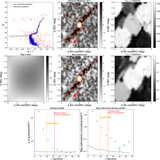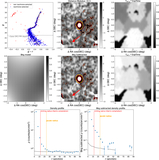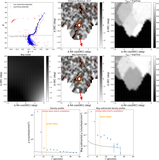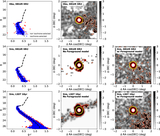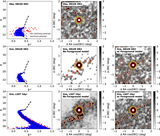Image Details
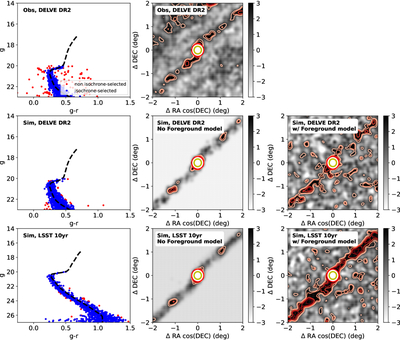
Caption: Figure 7.
A comparison of the observed Pal 5 stream in DELVE DR2 (top panels) with a simulation of the stream down to the DELVE DR2 depth (middle panels) and the LSST 10 yr depth (bottom panels). The left panels show the observed CMD (top), the simulated CMD from SPISEA (M. W. Hosek et al. 2020) with a DELVE DR2 magnitude error function (middle), and an error function for the LSST 10 yr depth (bottom). Stars selected along the isochrone for Pal 5 are shown in blue; note that stars along the red giant branch are excluded in the selection due to misalignment in the simulated and observed CMDs in that regime. The middle simulated column shows the isochrone selection applied to the simulation of Pal 5 with no Milky Way foreground, and the right simulated panels show the isochrone selection in the presence of a Milky Way foreground model populated by a fraction of stars in LSSTsim DR2 (P. Dal Tio et al. 2022) to force a rough visual match with observations at DELVE DR2 depth (g = 23.25, see Section 5). As expected, the stream becomes significantly more prominent at the forecasted full depth of LSST.
Copyright and Terms & Conditions
© 2025. The Author(s). Published by the American Astronomical Society.



